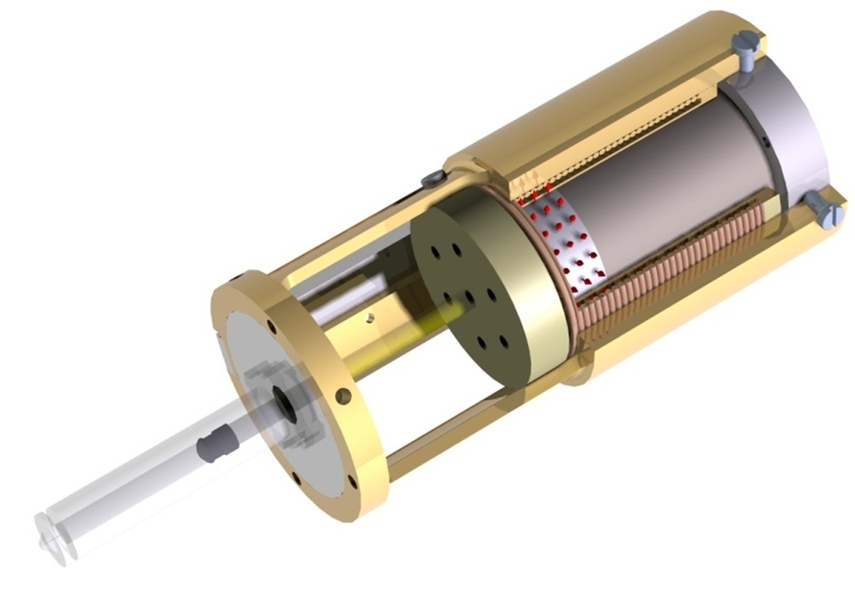
Credits:Image courtesy of the MIT BioInstrumentation Lab
Jet-injected drugs could improve patient compliance, reduce accidental needle sticks.
Getting a shot at the doctor’s office may become less painful in the not-too-distant future.
MIT researchers have engineered a device that delivers a tiny, high-pressure jet of medicine through the skin without the use of a hypodermic needle. The device can be programmed to deliver a range of doses to various depths — an improvement over similar jet-injection systems that are now commercially available.
The researchers say that among other benefits, the technology may help reduce the potential for needle-stick injuries; the Centers for Disease Control and Prevention estimates that hospital-based health care workers accidentally prick themselves with needles 385,000 times each year. A needleless device may also help improve compliance among patients who might otherwise avoid the discomfort of regularly injecting themselves with drugs such as insulin.
“If you are afraid of needles and have to frequently self-inject, compliance can be an issue,” says Catherine Hogan, a research scientist in MIT’s Department of Mechanical Engineering and a member of the research team. “We think this kind of technology … gets around some of the phobias that people may have about needles.”
Pushing past the needle
In the past few decades, scientists have developed various alternatives to hypodermic needles. For example, nicotine patches slowly release drugs through the skin. But these patches can only release drug molecules small enough to pass through the skin’s pores, limiting the type of medicine that can be delivered.
With the delivery of larger protein-based drugs on the rise, researchers have been developing new technologies capable of delivering them — including jet injectors, which produce a high-velocity jet of drugs that penetrate the skin. While there are several jet-based devices on the market today, Hogan notes that there are drawbacks to these commercially available devices. The mechanisms they use, particularly in spring-loaded designs, are essentially “bang or nothing,” releasing a coil that ejects the same amount of drug to the same depth every time.
Breaching the skin
Now the MIT team, led by Ian Hunter, the George N. Hatsopoulos Professor of Mechanical Engineering, has engineered a jet-injection system that delivers a range of doses to variable depths in a highly controlled manner. The design is built around a mechanism called a Lorentz-force actuator — a small, powerful magnet surrounded by a coil of wire that’s attached to a piston inside a drug ampoule. When current is applied, it interacts with the magnetic field to produce a force that pushes the piston forward, ejecting the drug at very high pressure and velocity (almost the speed of sound in air) out through the ampoule’s nozzle — an opening as wide as a mosquito’s proboscis.
via MIT – Jennifer Chu







